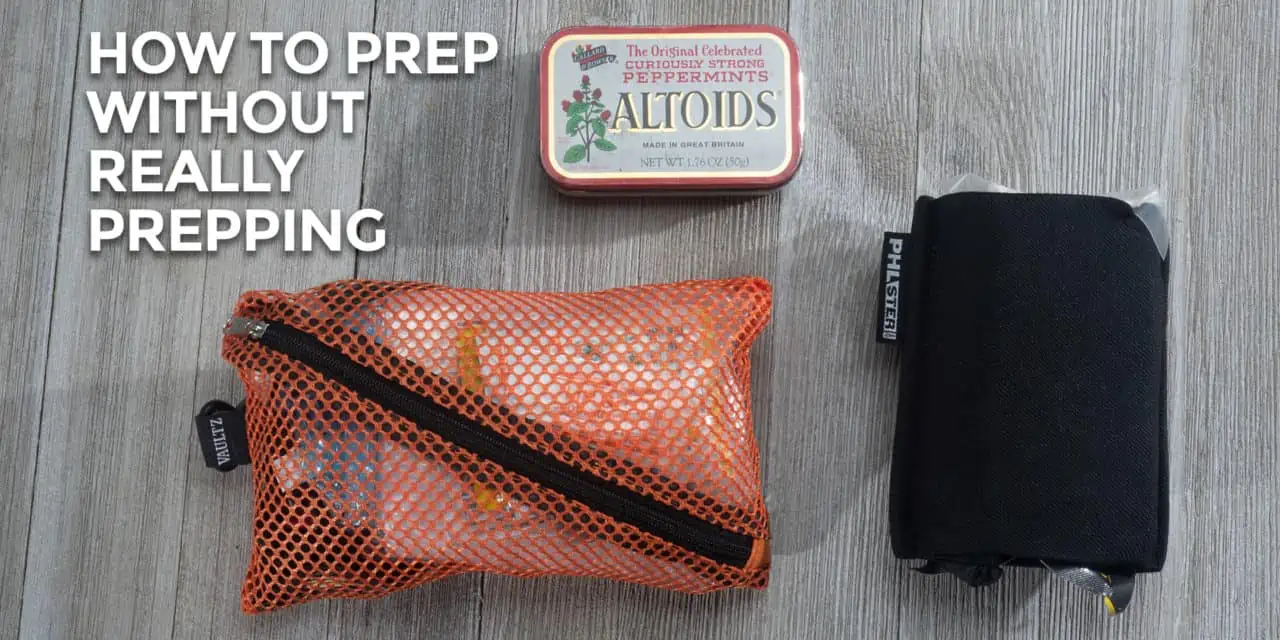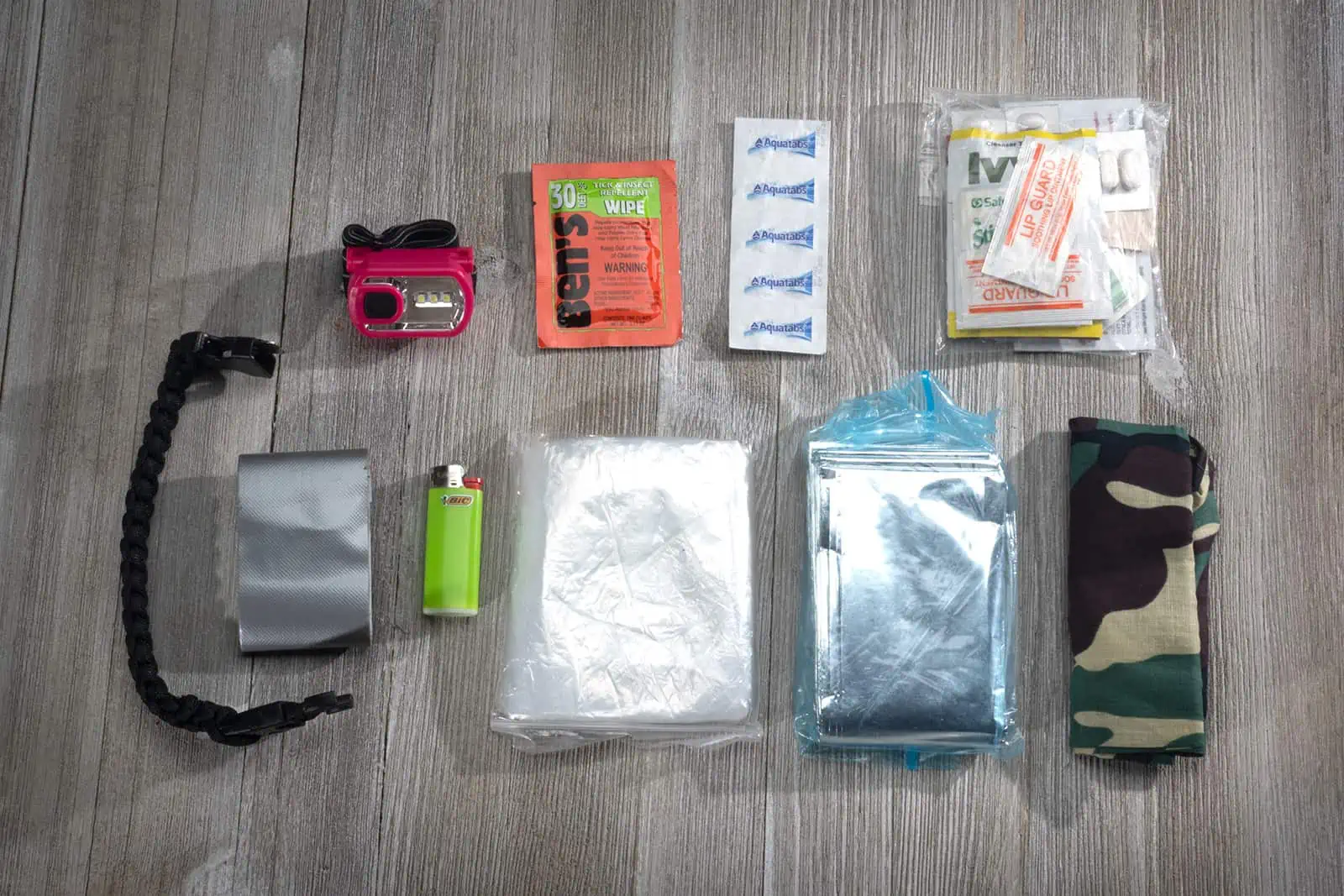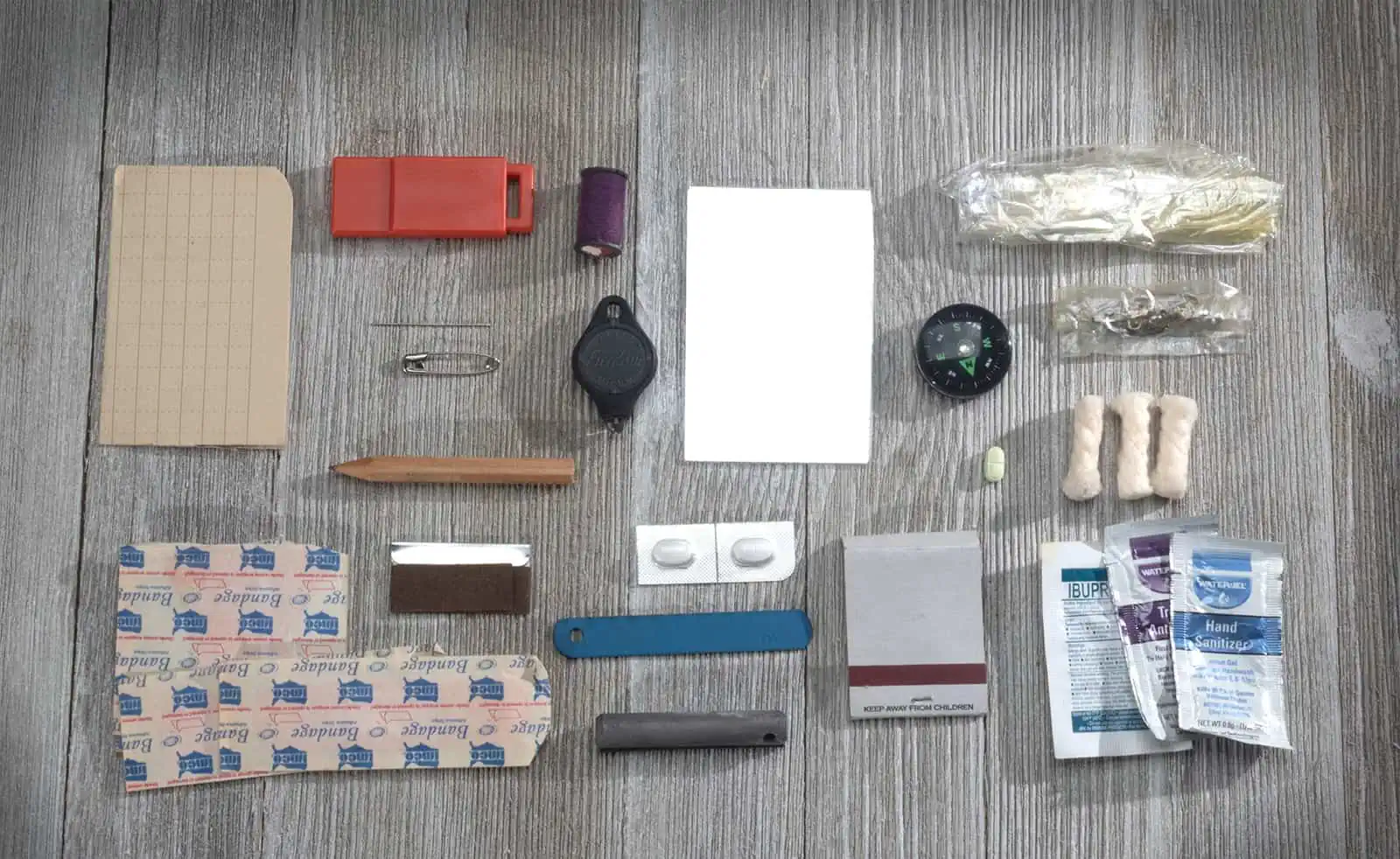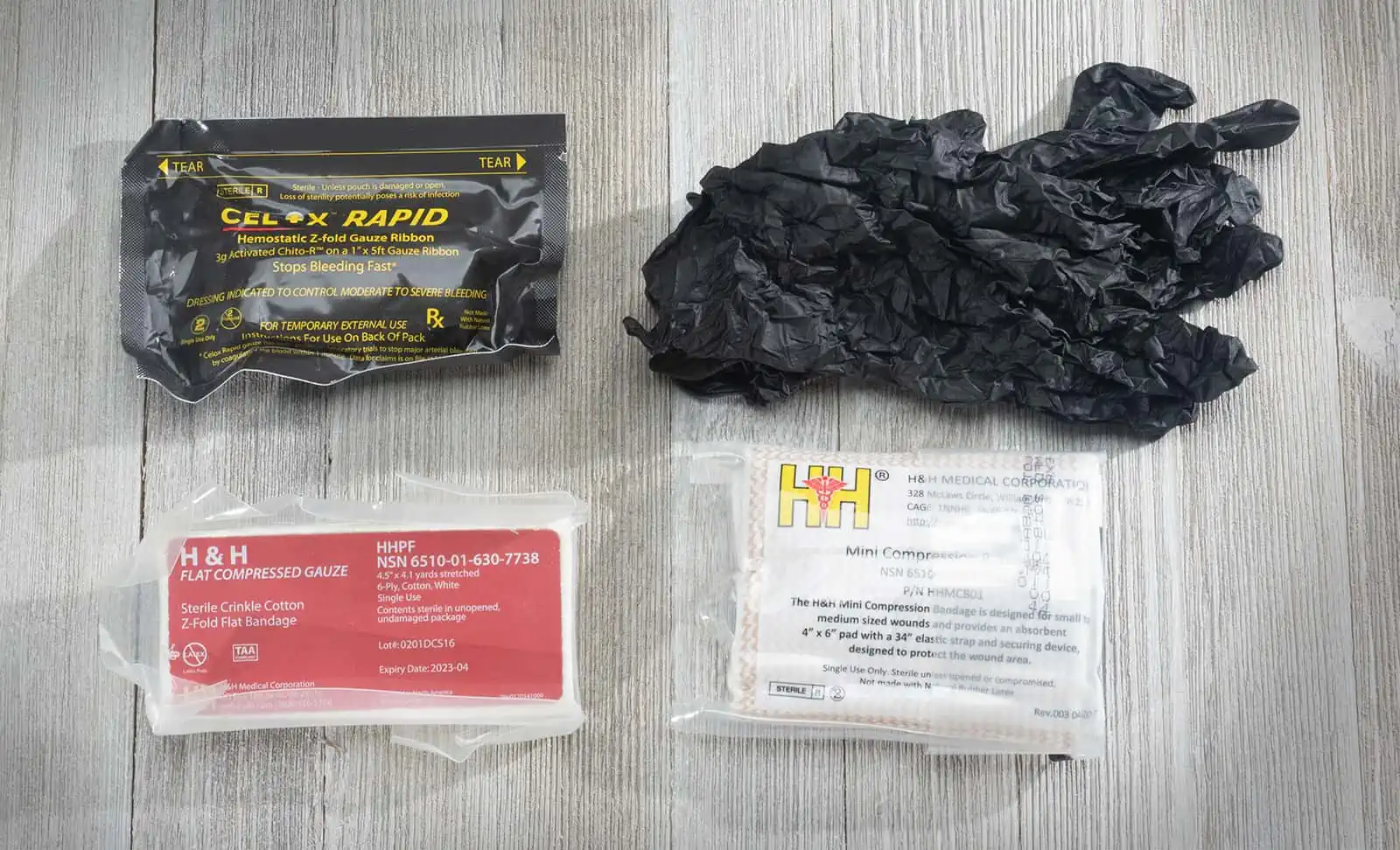How to Prep – Prepping Made Easy
Mention the word “prepping,” and chances are, you’ll conjure up images of a middle-aged man in a bunker somewhere out in the boondocks, rifle in hand, surrounded by cans of food and boxes of ammo. It’s an image that I quite frankly find a little ridiculous. I grew up in Western Canada, and the weather there would regularly cause interruptions in the normal routine of our family. When we’d go on trips in the family car, it was common for us to add a few blankets in the trunk to deal with cold weather, along with a shovel and some kitty litter to deal with the icy roads. My parents grew up on farms, so the cellar of our house was filled with homemade preserves and canned goods. Also, because the local town was often hours away, my family learned how to deal with life’s little ups and downs by ourselves, as help would probably take hours to arrive. Up there decades ago, knowing how to prep was just second nature.
For me, prepping isn’t just about preparing to deal with a zombie apocalypse, it’s about being ready to deal with the curve balls that life throws at you. I’ve had many more occasions when an adhesive bandage came in handy than I have opportunities to set a tourniquet. The most useful items in my everyday carry gear aren’t my pepper spray and pistol, they’re my flashlight and folding knife.
Prepping Means Being Prepared
Prepping doesn’t have to be arduous, and it doesn’t have to be expensive, either. What’s essential, though, is a mindset that you’re ready to deal with the problems of life, and have taken the steps to prepare (hence the word “prepping) for them when they arrive.
I now live in the suburbs and am raising a family of my own. We enjoy the outdoors, but most of our time is spent in and around the nearby cities. It’s that reality that I need to prepare for, not some week-long trek into the wilderness.
As such, I’ve put together three small, compact gear kits that augment my desire to come out ahead when life gets weird. Each of them serves a different purpose, and all of them are there to augment my desire to thrive in whatever situation may come my way.
The Urban Survival Kit
This orange mesh bag is usually tossed in to my laptop or camera bag when I’m out and about for any length of time. The point of this gear isn’t to come out of the other side of a breakdown of society. The point is to make my life in Southwest Florida a little bit more bearable. As such, it’s weighted towards items to smooth out the bumps in the road of life. Going left to right, the items in this kit include:
- A paracord bracelet, because paracord is one of those things that always comes in handy.
- A short length of duct tape, because it’s even handier.
- A headlamp, because of the many occasions I’ve ran into where I needed both hands and a flashlight to get the job done.
- A lighter. From lighting barbecues to melting heat-shrink tubing to other tasks, a lighter is a useful item, even for a non-smoker like me.
- Bug repellant. I mentioned I live in Florida, right? Here, we can tell what season it is just by the kinds of bugs flying around our head.
- Rain poncho. It’s a lovely June afternoon as I type this, and a rainstorm just ended outside where I’m writing. Having something to keep me dry, no matter where I am seems to be a good idea.
- Aqua tabs water purification tablets. Now we’re getting into the more hardcore “prepping” elements of this kit. Living in South America taught me that clean water is an essential element of life. So, if I’m out and about, I like to have some means of water purification with me, just in case the unthinkable happens when I’m not home.
- Mylar “space blanket.” Useful for shelter, for treating shock, for any number of things. Again, not something for everyday use, but something that can help keep you alive in horrible circumstances.
- First aid kit. The items in here aren’t meant to deal with a grievous injury. Rather they’re meant to help deal with life’s smaller problems, such as cuts, scrapes, allergies and indigestion.
- Bandanna. From mopping up sweat to blowing your nose to setting a splint, there is so much that a bandanna can do, it makes so much sense to have one with you every day.
The Weekend Warrior Kit
As I said, my family likes to go outdoors, and hiking is one of our favorite activities. However, we like to explore. The news is filled with stories about over-casual hikers who turned a one-day hike into a struggle to survive against nature.
This little kit easily fits into an empty tin of breath mints, and yet still provides the basics of signaling, fire starting and first aid should we find ourselves in need to survive on our own until help arrives.
Starting from left, the items in this tin include:
- Some waterproof paper. Good for firestarting or leaving notes to help rescuers find your party
- Adhesive strip bandages. Yes, they’re for “oowies” only, but you know what? We call those types of injuries “oowies” because they hurt. Best be prepared to deal with them.
- Whistle. If you need to call for help, the sound from a whistle travels a lot further than your voice.
- Needle, safety pin, thread. Useful in so many different ways, from mending clothing to improvising fishing gear.
- Pencil. Because you need something to use to write on that paper.
- Razor blade. I always have a knife on me, but the extra sharpness of a razor blade comes in handy.
- Photon Microlight II. Again, I normally carry a small pocket light with me everywhere I go, but an extra light comes in handy when you go hiking with a family.
- Magnesium firestarter and scraper. Honestly, it took me awhile to get the hang of these, but now I can use them to start a fire almost anywhere.
- Plastic mirror. Thin, light and flexible, it’s an excellent signaling device.
- Compass. Because you don’t know where you’re going unless you know where you are.
- Matches. Easier use than any firestarter out there, though they are prone to water.
- Antibiotic /Burn Salve/Ibuprofen. Just enough to deal with small issues.
- Anti-diarrheal. I don’t know why this isn’t a part of every off-the-shelf outdoor survival kit on the market. Unsafe water is a real thing outdoors, and having Imodium (or a generic equivalent) can turn a bad situation into something a lot more tolerable.
- Tinder patches. Because I see no reason not to take advantage of all the things out there to help me start a fire.
- Fishing gear. I included this when we moved to Florida, but I think I’ll be ditching soon in favor of water purification tablets, because troubles with impure water will show up much faster than problems with lack of food will.
- Spare zip close bag. Again, something that is very useful in many different ways (storing water, keeping gear dry, storing food). It’s too handy not to have.
The Trauma Kit
I have a tourniquet either on me or within easy reach everywhere I go. While a tourniquet is mighty handy to have in a life or death situation, there are other bits of trauma gear than can help save lives. The Pocket Emergency Wallet (or PEW for short) from Phlster Holsters packs essential trauma gear (other than a tourniquet) into a small pack that’s super-easy to carry around.
The Pocket Emergency wallet includes (from left to right):
- A Celox (or similar) blood-clotting bandage. The knock on blood-clotting agents used to be that they would cause burns as they reacted to the blood gushing out of your body. Newer versions of these products, though, don’t cause that reaction, so buy them and carry them with confidence.
- H+H Flat Compressed Gauze. Useful for packing wounds or all the other times when medical gauze comes in handy.
- H+H Mini Compression Bandage. A handy backup for your tourniquet or all the other injuries that are severe but don’t require the application of a tourniquet.
- Nitrile gloves. Because saving a life while endangering your life is rarely a good idea.
Every one of these gear kits can easily fit into all the smallest of purses, backpacks or laptop bags. While it’s very true that training, expertise and mindset are obviously the most useful things to have in an emergency situation, training and expertise, combined with the right gear, can save the day in an emergency situation.





